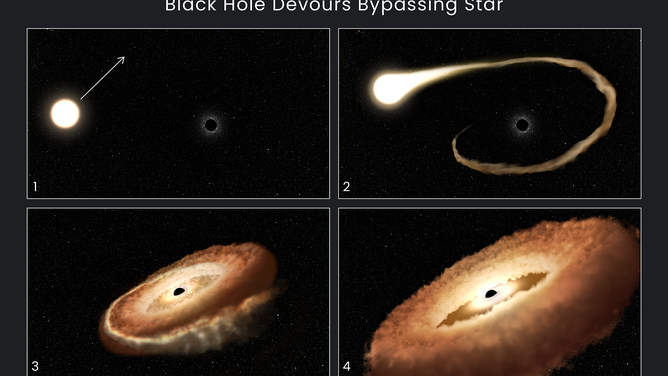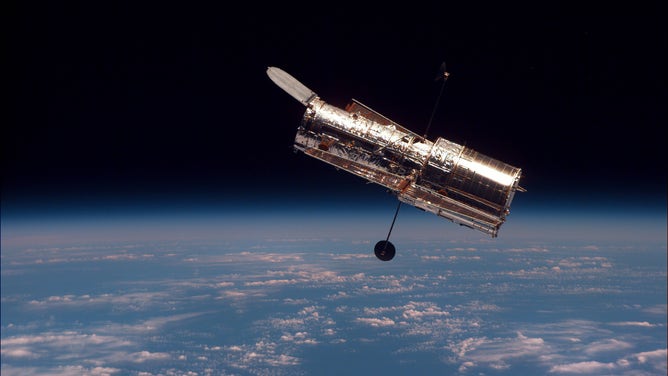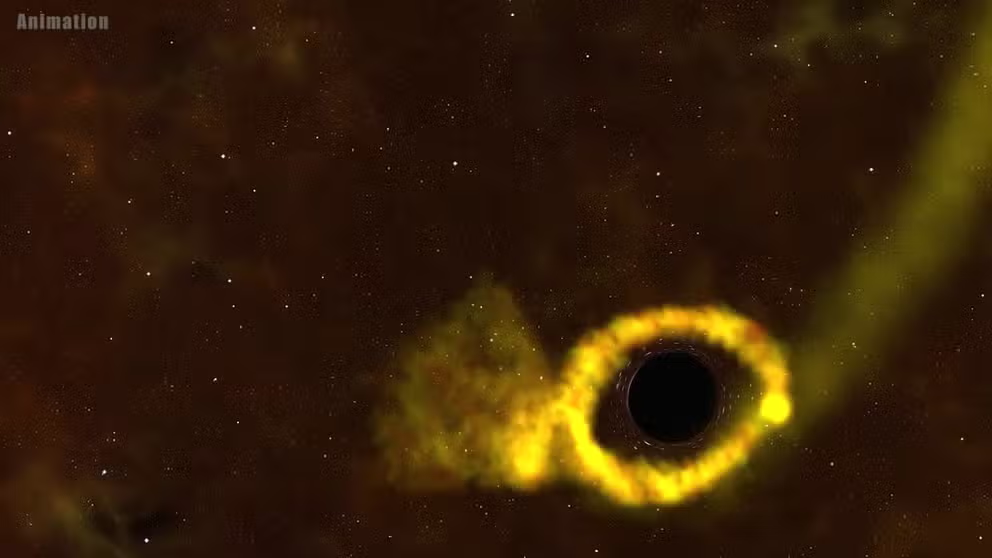Stellar snack: How a black hole eats a doomed star for breakfast
Doughnuts anyone? NASA Hubble Space Telescope images show a black hole gobbling up a star in its final moments. The event created a doughnut-like ring that will eventually be sucked back up into the black hole.
Hubble Space Telescope used to watch black hole eat a star
Astronomers used Hubble Space Telescope's ultraviolet capabilities to investigate the death of a recently devoured star nearly 300 million light-years away. These events are known as "tidal disruptions."
Black holes are like "Cookie Monsters" of the universe, gobbling up whatever celestial snack is nearby.
NASA's Hubble Space Telescope helped study one of these hungry black holes devouring a star like a full meal in March 2022.
Astronomers used Hubble's ultraviolet capabilities to investigate the death of a recently devoured star nearly 300 million light-years away in a galaxy known as 583-G004. While the star is too far for Hubble to "see," according to NASA, the spectroscopy found leftover elements of the star, including hydrogen and carbon.
NASA scientists say black holes don't "hunt" or seek out stars, but when they happen to get close enough to a bypassing star, the encounter turns violent. These events are known as "tidal disruptions," as the black hole sucks up the star, spitting out leftovers.
HOW THE TELESCOPE BECAME OUR WINDOW INTO THE UNIVERSE
The artist's illustrations below show how a black hole pulls in the gasses of the star and then shreds the star apart. The stellar leftovers are formed into a doughnut-like ring around the black hole, eventually getting consumed by the star-sucking black hole.

This sequence of artist's illustrations shows how a black hole can devour a bypassing star. (Credits: NASA, ESA, Leah Hustak (STScI))
(NASA)
While astronomers have detected about 100 tidal disruption events using different telescopes, NASA estimates these stellar snack attacks happen a few times every 100,000 years.
Most of these disruptions are only observed at the beginning of the event when it's very bright. According to NASA, this stellar snacking event, AT2022dsb, was close enough to Earth and bright enough for the Hubble astronomers to observe the ultraviolet spectroscopy over a longer-than-normal time.
AT2022dsb was first detected by the All-Sky Automated Survey for Supernovae or ASAS-SN, aka "Assassin." The group uses a network of ground-based telescopes to look for violent, variable and transient events outside our solar system, the Milky Way.
"Typically, these events are hard to observe. You get maybe a few observations at the beginning of the disruption when it's really bright," Harvard & Smithsonian Center for Astrophysics scientist Peter Maksym said. "Our program is different in that it is designed to look at a few tidal events over a year to see what happens. We saw this early enough that we could observe it at these very intense black hole accretion stages. We saw the accretion rate drop as it turned to a trickle over time."
NASA SCIENTISTS DISCOVER EARTH-SIZED, 'HABITABLE ZONE' WORLD JUST 100 LIGHT-YEARS AWAY
The data astronomers are seeing comes from a very bright doughnut-shaped area of gas that was once the star.
"We're looking somewhere on the edge of that donut. We're seeing a stellar wind from the black hole sweeping over the surface that's being projected towards us at speeds of 20 million miles per hour (3% the speed of light)," said Maksym. "We really are still getting our heads around the event."

The Hubble Space Telescope floats above the Earth's atmosphere.
(NASA)
The Hubble Space Telescope has been observing our galaxy and the universe for more than 30 years from about 300 miles above Earth. As expected, Hubble has slowly been getting pulled back to Earth and is expected to eventually burn up in Earth's atmosphere.
NASA is considering the offer by the private Polaris Program to use SpaceX's Crew Dragon spacecraft to boost Hubble and keep the space telescope functioning for even longer. A feasibility study is ongoing through early 2023.
